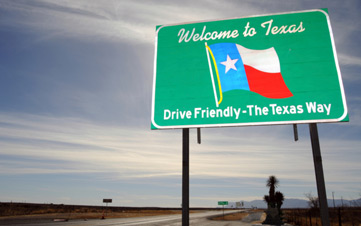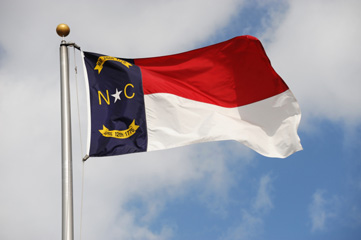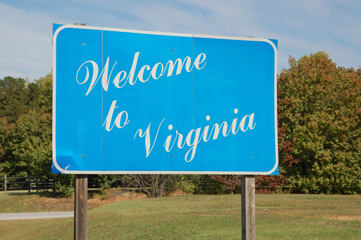10 States Adding the Most Net Jobs in 2013
Just 10 states will account for more than half of total U.S.


Just 10 states will account for more than half of total U.S. employment growth this year, largely because they're all big-population states. With a large base, it doesn't take the fastest rate of growth to rack up big gains, and nine of the 10 states on the biggest-gainers list also rank in the top 10 for population size.
But hiring growth in states such as California, New York and North Carolina has barely kept up with population growth, resulting in unemployment rates that remain higher than the national rate of 7.8% at the end of 2012.
Disclaimer
Sources: Bureau of Labor Statistics, IHS Global Insights, Moody's Analytics, Federal Reserve Bank of New York, state economic data

1. California
- 2013 net job gain forecast: 252,260
- Likely pace of job growth: 1.8%
- Population: 38,041,430
- Unemployment rate (Dec. 2012): 9.8%
- 2012 net job gain: 225,900
Construction jobs in California are expected to surge over the next two years as the housing market continues to recover. Growing by 4% this year and as much as 8% next year, the construction industry will be one of the main drivers of employment gains in the state, but other industries will also see increases. Among them: leisure and hospitality, retail, health care, professional, scientific and technical services, and administrative and support services. Job growth won't be evenly spread across the Golden State; some areas will fare better than others. For instance, the tech-friendly Bay Area will continue to lead the state, with both the San Francisco and Oakland metro areas posting job growth of more than 3% this year.
Though California will again add more jobs than any other state this year, employment took a steep dive in the recession. So far, only about 560,000 of the more than 1.4 million jobs lost during the recession have been regained. Thus, the state's unemployment rate is, and will remain, high through 2013. It was two percentage points above the national rate at the end of 2012 and isn't expected to fall to much further for at least another year.

2. Texas
- 2013 net job gain forecast: 247,850
- Likely pace of job growth: 2.3%
- Population: 26,059,203
- Unemployment rate (Dec. 2012): 6.1%
- 2012 net job gain: 260,800
- The Lone Star State isn't banking just on oil gains. Hiring by General Motors, Texas Instruments, ramen noodles manufacturer Maruchan and energy equipment producer Weatherford Artificial Lift Systems, among others, will help keep Texas' unemployment rate well below the national average.
An expanding energy sector will help keep Texas on both of Kiplinger's lists -- the biggest job gainers and the fastest job gainers. The state has already recaptured all of the jobs lost during the recession, and now ExxonMobil is relocating 2,100 workers from Virginia plus some from an Ohio plant to a new 10,000-employee facility in Houston. In addition, Anadarko Petroleum plans to hire 450 more workers, and Chevron is moving 800 jobs to the state.

3. Florida
- 2013 net job gain forecast: 175,985
- Likely pace of job growth: 2.4%
- Population: 19,317,568
- Unemployment rate (Dec. 2012): 8%
- 2012 net job gain: 54,900
- Also a winner in both top 10 lists, Florida will add three times as many net new jobs this year as it did last, confirming that the Sunshine State is just starting its turnaround. Look for the state to enjoy continued gains in the leisure and hospitality industry as tourism perks up with an improving national economy.
Another big gainer: construction, as the Sunshine State's dismal housing industry finally starts to claw its way out of the hole it has been in. Also likely to see gains this year are business services, education and health services.

4. Illinois
- 2013 net job gain forecast: 88,055
- Likely pace of job growth: 1.5%
- Population: 12,875,255
- Unemployment rate (Dec. 2012): 8.7%
- 2012 net job gain: 41,900
- This year, the nation's fifth most populated state, Illinois, will double the number of jobs it added in 2012, increasing employment in professional and business services, manufacturing, hospitality, and education and health services. Manufacturing, too, will contribute. It's still going strong in the Land of Lincoln, accounting for nearly one out of every 10 nonfarm jobs. Factory jobs grew by 2.4% last year, and they'll probably match that pace this year. Companies likely to expand include Continental Tire in Mount Vernon, Quad/Graphics in Effingham, Case IH in Goodfield, and Bridgestone Tires in Bloomington.
Still, job growth won't do much more than absorb new entrants to the state's labor force — immigrants and young folks getting their first jobs — so unemployment will remain stubbornly high. Look for it to continue to top the national average by about half a percentage point.

5. North Carolina
- 2013 net job gain forecast: 84,740
- Likely pace of job growth: 2.1%
- Population: 9,752,073
- Unemployment rate (Dec. 2012): 9.2%
- 2012 net job gain: 41,900
- One of just three states in both top 10 lists, North Carolina will see big progress this year. Nevertheless, it will continue to struggle with high unemployment — bespeaking the woes of this abysmally slow economic expansion. Employers in the Tar Heel State will create more than twice as many jobs this year as they did last year, racking up gains in manufacturing, government and retail. Business and professional services are also expected to rise, climbing by more than 2.5% in 2013, while health and leisure services and information jobs will clock in at an over-2% growth pace.
Only four states had higher unemployment rates than North Carolina at the end of 2012. As of January, North Carolina still had to replace about two-thirds of the 333,400 jobs lost during the recession.

6. Pennsylvania
- 2013 net job gain forecast: 82,880
- Likely pace of job growth: 1.4%
- Population: 12,763,536
- Unemployment rate (Dec. 2012): 7.9%
- 2012 net job gain: 38,700
Gas drilling in the Marcellus Shale formation will help make Pennsylvania one of the biggest employment gainers this year. Look for natural resources and mining sector employment in the Quaker State to increase by about 10% this year, to 44,000. But the state will also add a significant number of jobs in manufacturing, health care and construction. Growing less swiftly, but still gaining: information, professional and business services and the leisure and hospitality industries.

7. New York
- 2013 net job gain forecast: 79,390
- Likely pace of job growth: 0.9%
- Population: 19,570,261
- Unemployment rate (Dec. 2012): 8.2%
- 2012 net job gain: 123,600
- Despite adding fewer jobs in 2013 than in 2012, New York will add the seventh largest number of jobs. Perhaps even more surprising is New York's below-average rate of growth. Along with neighboring New Jersey and Connecticut, the Empire State will see employment grow at less than 1% this year. Health care, education and tech firms are all expected to add workers.
In New York City, employment not only has reclaimed the previous, prerecession peak, but it also hit an all-time high last year. And it did so despite continued cuts in financial services jobs. Other communities that have recouped recession job losses include Albany, Buffalo, Rochester and Ithaca. The Syracuse and Binghamton areas have lagged behind.

8. Ohio
- 2013 net job gain forecast: 73,630
- Likely pace of job growth: 1.4%
- Population: 11,544,225
- Unemployment rate (Dec. 2012): 6.7%
- 2012 net job gain: 90,700
Thanks in large part to the booming automobile industry, Ohio will add enough manufacturing jobs next year to give it the eighth largest job growth this year. Ford, for example, plans to invest $200 million in its Cleveland plant to make EcoBoost engines, adding 450 workers to its payroll. Food manufacturers are also expanding their workforce in the state. Abbott, maker of Ensure and Glucerna, for instance, will hire about 240 people for a new facility north of Dayton. And the number of business and professional service jobs is on the rise, with IBM opening a new data analytics center in Ohio. It expects to hire 500 business analysts and researchers over the next three years.

9. Georgia
- 2013 net job gain forecast: 72,870
- Likely pace of job growth: 1.8%
- Population: 9,919,945
- Unemployment rate (Dec. 2012): 8.7%
- 2012 net job gain: 74,100
Job growth in Georgia will be led by gains in professional and business services plus the manufacturing and construction industries. Employment in the Peach State was hit hard by the recession, but 2013 brings new projects and downward pressure on the unemployment rate, which is running at 0.9 percentage point above the national average. Equipment maker Caterpillar, for example, will create 1,400 jobs near Athens, and medical company Baxter is adding 1,500 jobs at a new plant outside Atlanta to manufacture plasma-based treatments.

10. Virginia
- 2013 net job gain forecast: 59,445
- Likely pace of job growth: 1.6%
- Population: 8,185,867
- Unemployment rate (Dec. 2012): 5.5%
- 2012 net job gain: 31,300
Virginia's nonfarm workforce is growing, and the state had a low unemployment rate of 5.5% at the end of 2012. As 2013 began, job gains were picking up in health and education services, as well as in financial services, and the state was expected to surpass its prerecession peak this year, adding just under 5,000 jobs per month.
But the commonwealth is the largest recipient of all federal contracts and receives more contract money from the Department of Defense than any other state. Under a federal budget sequester, the Defense Department outlays will be disproportionately cut. Because defense contractors General Dynamics, BAE Systems, SAIC, DynCorp, Booz Allen Hamilton and Computer Sciences Corp., among many others, call the Old Dominion home, Virginia's job growth prospects may take a beating. One estimate puts the job losses from sequestration above the 150,000 mark.

Get Kiplinger Today newsletter — free
Profit and prosper with the best of Kiplinger's advice on investing, taxes, retirement, personal finance and much more. Delivered daily. Enter your email in the box and click Sign Me Up.

-
 Is Flying in America Still Safe? Navigating the Turbulence in U.S. Air Travel
Is Flying in America Still Safe? Navigating the Turbulence in U.S. Air TravelWith outdated systems and staffing shortages causing disruptions, here's what travelers need to know to stay safe and protect their plans.
-
 Stock Market Today: Dow Gains 1,160 Points on U.S.-China Trade Deal
Stock Market Today: Dow Gains 1,160 Points on U.S.-China Trade DealThe two countries agreed to a 90-day truce that will give them time to work on more substantive trade negotiations.
-
 What to Do With Your Tax Refund: 6 Ways to Bring Growth
What to Do With Your Tax Refund: 6 Ways to Bring GrowthUse your 2024 tax refund to boost short-term or long-term financial goals by putting it in one of these six places.
-
 What Does Medicare Not Cover? Eight Things You Should Know
What Does Medicare Not Cover? Eight Things You Should KnowHealthy Living on a Budget Medicare Part A and Part B leave gaps in your healthcare coverage. But Medicare Advantage has problems, too.
-
 15 Reasons You'll Regret an RV in Retirement
15 Reasons You'll Regret an RV in RetirementMaking Your Money Last Here's why you might regret an RV in retirement. RV-savvy retirees talk about the downsides of spending retirement in a motorhome, travel trailer, fifth wheel or other recreational vehicle.
-
 The Six Best Places to Retire in New England
The Six Best Places to Retire in New Englandplaces to live Thinking about a move to New England for retirement? Here are the best places to land for quality of life, affordability and other criteria.
-
 The 10 Cheapest Countries to Visit
The 10 Cheapest Countries to VisitWe find the 10 cheapest countries to visit around the world. Forget inflation woes, and set your sights on your next vacation.
-
 15 Ways to Prepare Your Home for Winter
15 Ways to Prepare Your Home for Winterhome There are many ways to prepare your home for winter, which will help keep you safe and warm and save on housing and utility costs.
-
 Six Steps to Get Lower Car Insurance Rates
Six Steps to Get Lower Car Insurance Ratesinsurance Shopping around for auto insurance may not be your idea of fun, but comparing prices for a new policy every few years — or even more often — can pay off big.
-
 How to Increase Credit Scores — Fast
How to Increase Credit Scores — FastHow to increase credit scores quickly, starting with paying down your credit card debt.
